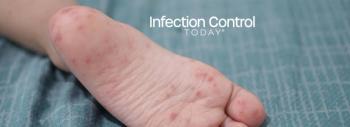
Study Reports HAIs are on the Rise
WASHINGTON, D.C. -- Infection control practitioners (ICPs) devote their careers to preventing healthcare-associated infections (HAI) by educating healthcare personnel on infection prevention measures, conducting infection surveillance, and reporting infection data to hospital administrators and public health officials. A recently released study indicating an increase in HAIs has prompted the infection prevention community to respond.
The study, conducted by Health Grades and titled, HealthGrades Patient Safety in American Hospitals, reports that incidents of HAIs in the nations hospitals are on the rise. Infection prevention professionals are concerned that the studys use of administrative diagnostic and billing codes to identify HAIs is misleading.
Scientific evidence of a correlation between administrative codes and surveillance and presence of HAIs is not definitive, states Sue Sebazco, president of the Association for Professionals in Infection Control and Epidemiology (APIC).
Research shows that there is a wide disparity in the number of HAIs identified using administrative codes and those identified through validated infection surveillance systems, states Sebazco. An abstract presented during the April 2005 Society for Healthcare Epidemiology in America (SHEA) annual conference reported that data abstracted from hospital billing records identified 943 patients with presumed HAI from administrative codes versus 239 cases using validated HAI surveillance. Another 131 infections identified by validated infection surveillance were not captured from billing records. The abstract authors concluded that further investigation of the use of administrative/billing databases for HAI surveillance is needed.
The Health Grades study also indicates that adherence to known infection prevention practices, including proper hand hygiene, would significantly reduce the incidence of HAIs. Infection professionals work diligently to employ the most advanced infection control and prevention practices, and follow guidelines issued by the Centers for Disease Control and Prevention (CDC), the Joint Commission on Accreditation of Healthcare Organizations (JCAHO), and the Centers for Medicare and Medicaid Services (CMS).
ICPs are on the front line of HAIs, and we agree that adherence to preventive measures greatly reduces the occurrence of these adverse outcomes, states Sebazco. We also understand the complexities associated with HAIs, including an increasingly aging and ill patient population, differences in the types of healthcare provided within hospitals, and increasing occurrence of antimicrobial resistant organisms.
Accurate collection and reporting of HAI data can be accomplished through a national standard that identifies infection definitions and surveillance methods, says Sebazco. APIC is currently working with stakeholders, including the Centers for Disease Control and Prevention, and the National Quality Forum, on the pursuit of funding for the development of such a standard. CDC has over 35 years of experience and data from 300+ volunteer hospitals that use standardized definitions and surveillance methods to develop HAI data, which is submitted to CDC.
Sebazco stresses, Infection professionals are first and foremost patient safety advocates who support consumers rights to meaningful data with which to make healthcare decisions. We champion the culture of safety within our institutions, and will continue to educate and promote adherence to prevention practices.
Source: APIC
Newsletter
Stay prepared and protected with Infection Control Today's newsletter, delivering essential updates, best practices, and expert insights for infection preventionists.






